This teriyaki salmon is incredibly flavorful. Featuring low-sugar teriyaki sauce, this easy oven-baked recipe is ready in 25 minutes.
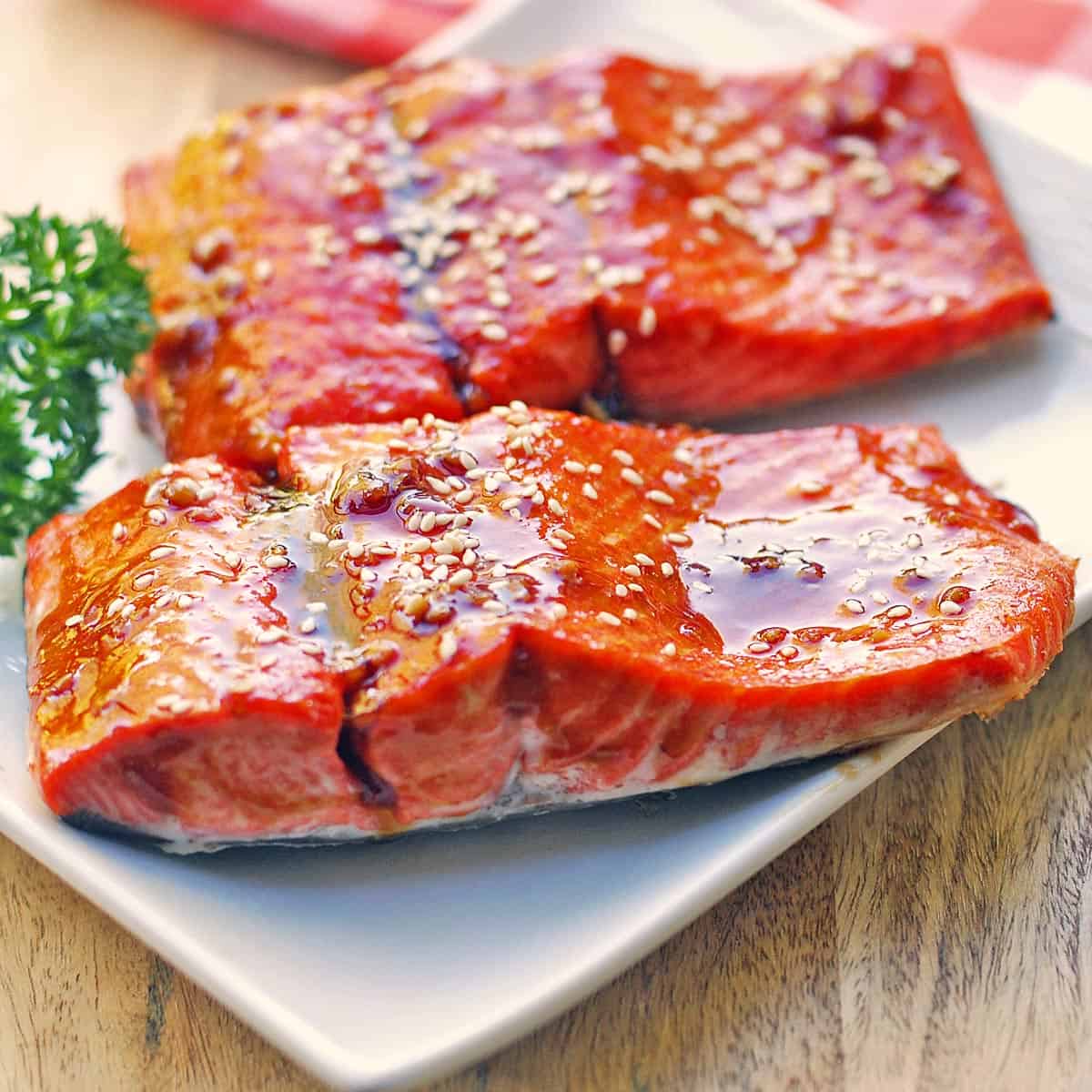
Teriyaki sauce is delicious, but it can be overwhelmingly sweet. That's why I developed this recipe, featuring no white sugar and just a small amount of honey. It's so good! I use this sauce when making teriyaki chicken wings and teriyaki chicken drumsticks, and I also use it to make this delicious teriyaki salmon. Savory-sweet and intensely flavored, this flavorful recipe has quickly become a family favorite.
Ingredients and Substitutions
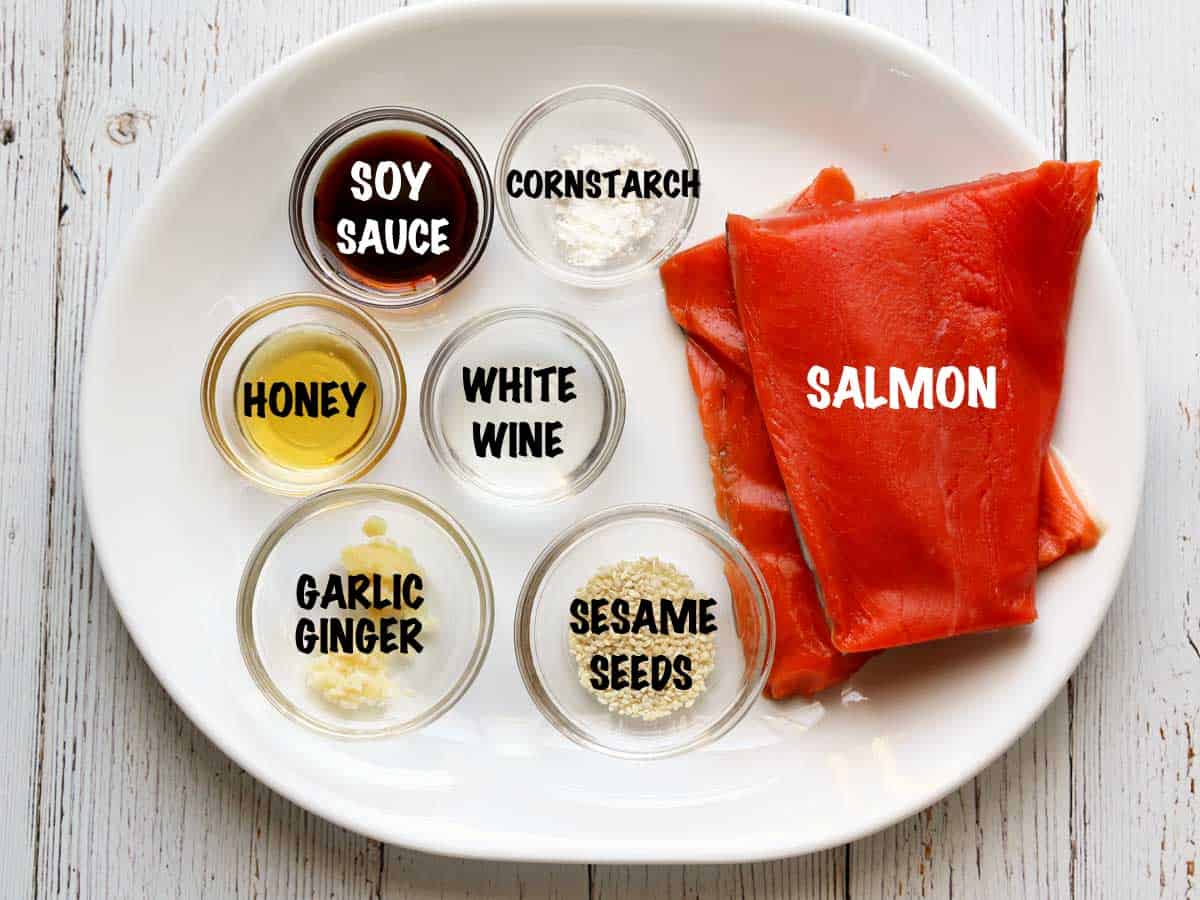
See the recipe card for exact measurements. Here are my comments on some of the ingredients.
- Dry white wine: Classic teriyaki recipes typically call for sake, but I don't usually have that on hand. Dry white wine works perfectly well, and can also be served with the dish if you're so inclined.
- Honey: Just one tablespoon to add a bit of sweetness. Maple syrup is a good substitute.
- Minced garlic and ginger: You can mince them by hand for the optimal flavor, or use the stuff that comes in a jar. But please don't use the powders - they're not as potent or tasty.
- Salmon fillets: I use skin-on fillets because salmon skin is delicious.
Instructions
The detailed instructions and step-by-step photos are included in the recipe card. Here's a quick overview.
Bake the salmon fillets until they are cooked through. You can also broil the salmon instead of baking it.
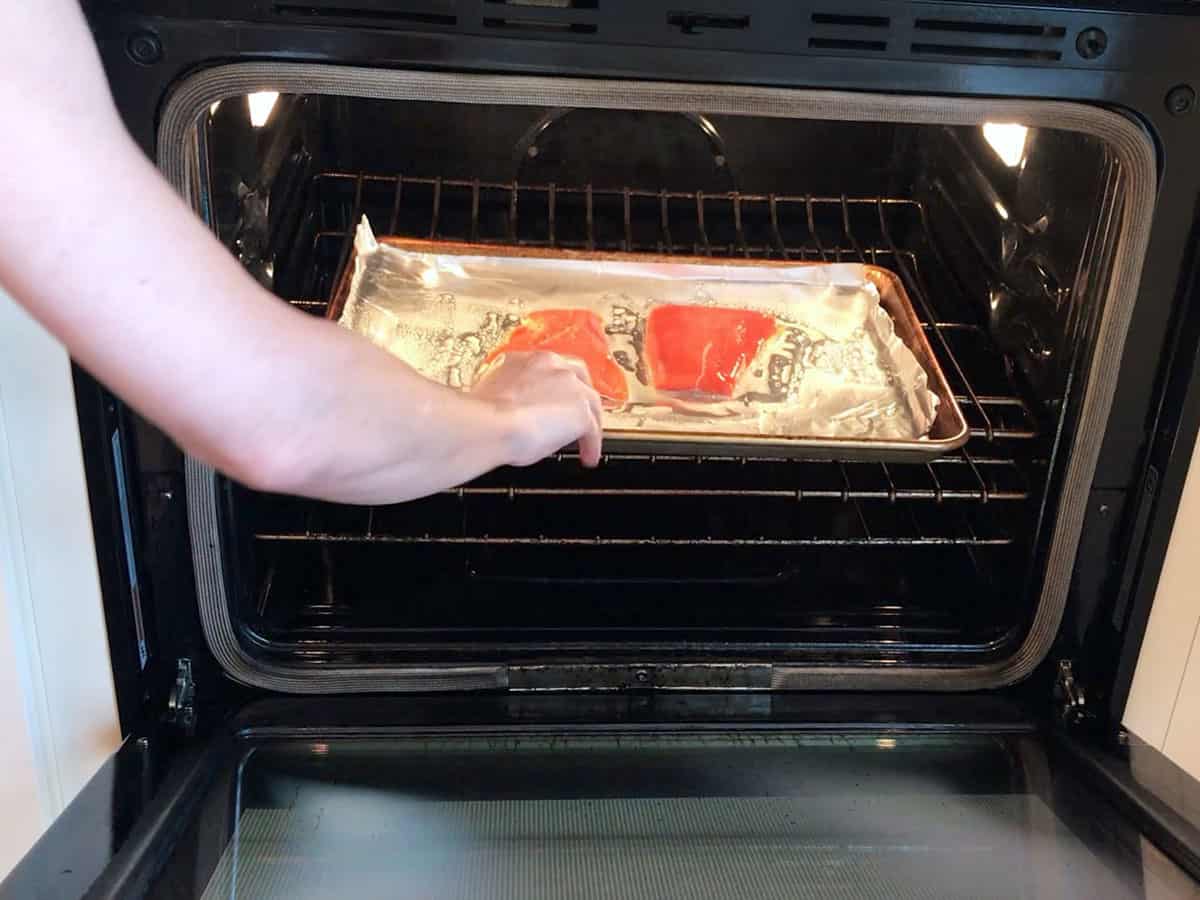
While the fish is in the oven, prepare the teriyaki sauce: Mix its ingredients in a small saucepan, then heat the mixture over low heat, whisking often, until it thickens.
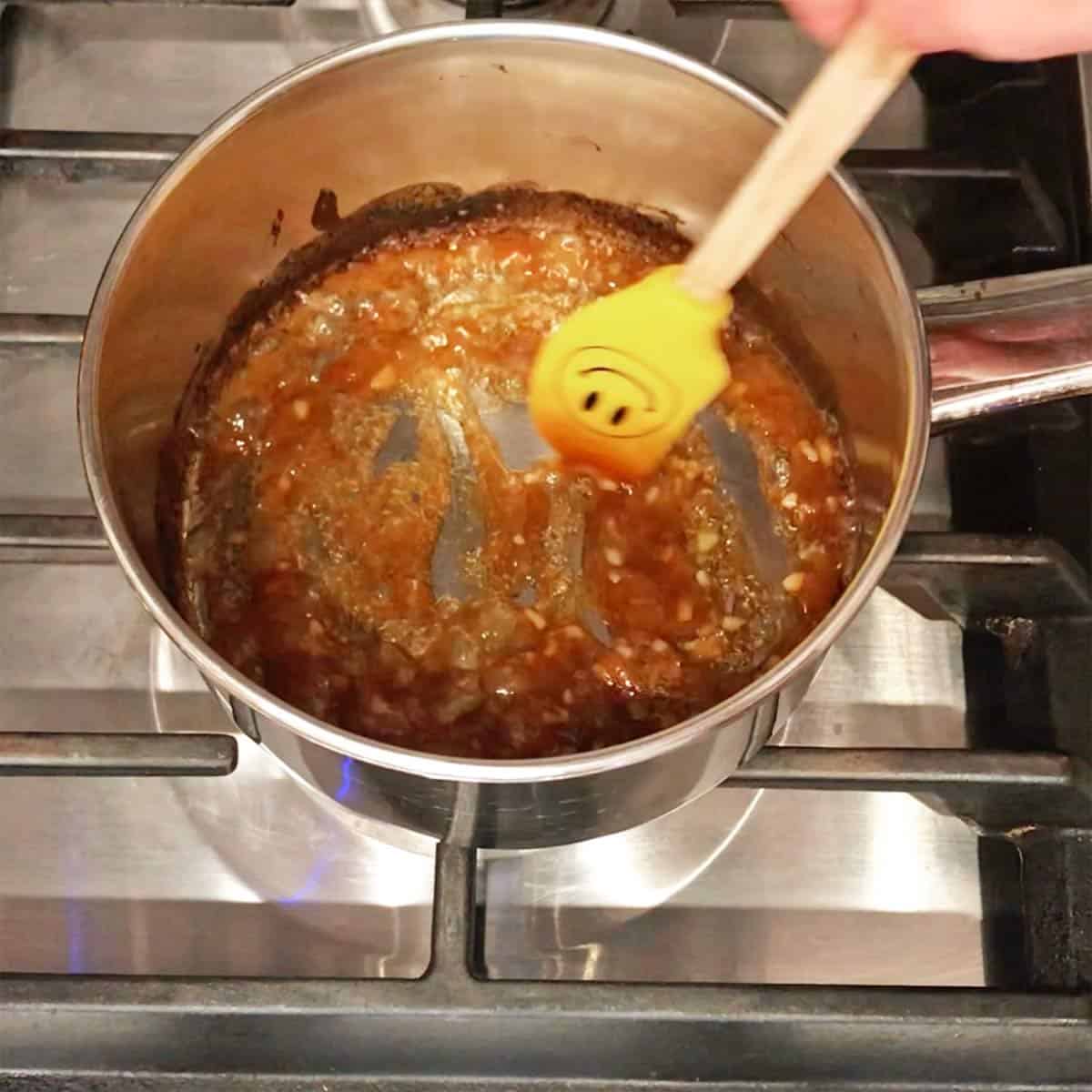
To finish the dish, brush the cooked salmon with the sauce, sprinkle it with sesame seeds, and serve.
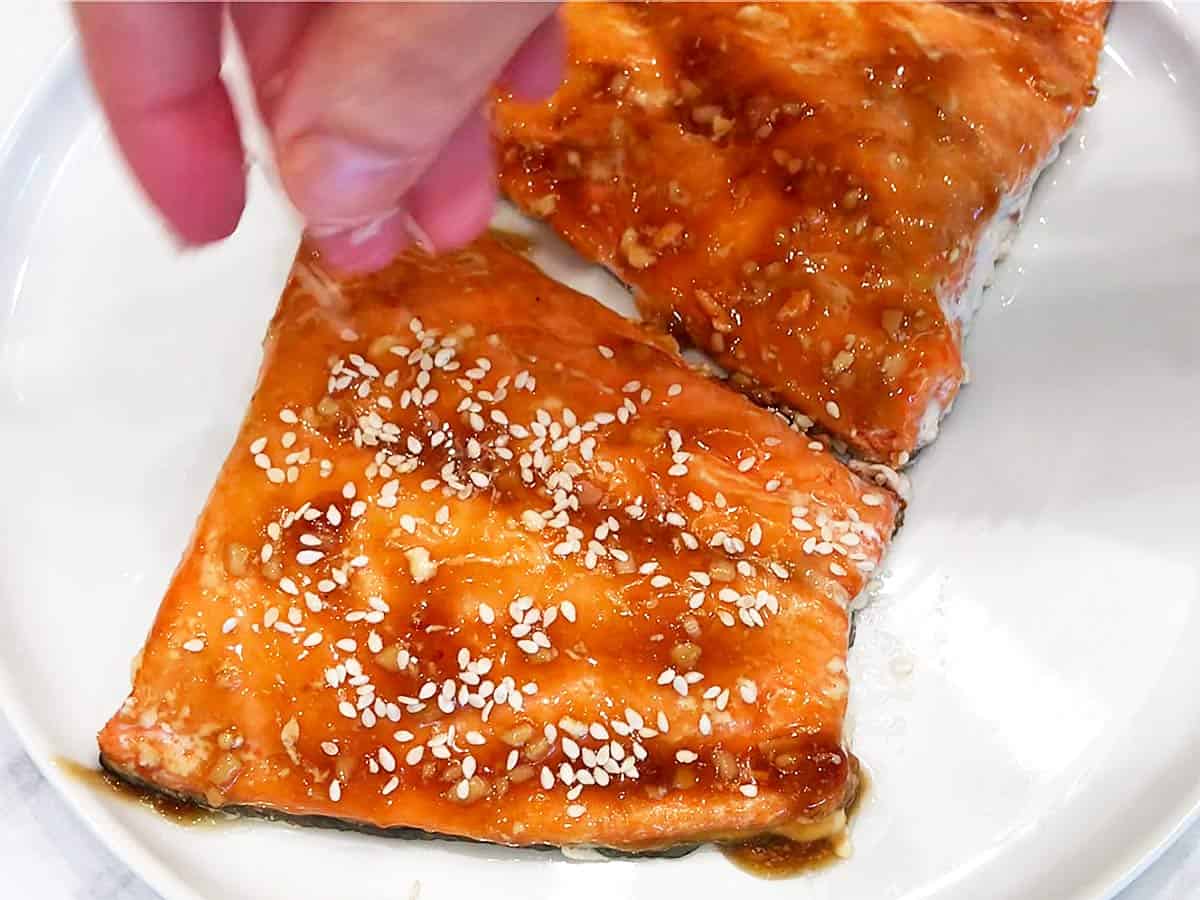
Recipe Tips
- The sauce tends to thicken fast and without warning. If you don't watch it closely, it can thicken too much. So, keep an eye on it while you heat it, and remove it from the heat as soon as it thickens.
- There's no need to marinate the salmon. I like to keep things quick and simple, so I bake the salmon, make the sauce separately, and then brush the sauce on the cooked salmon.
- Have you noticed white patches on your salmon, as shown in the photo below? That's albumin, a protein that remains liquid in the raw fish but coagulates when the fish is heated. It's fine to eat it. The best way to minimize it is to cook the fish gently and avoid overcooking it.
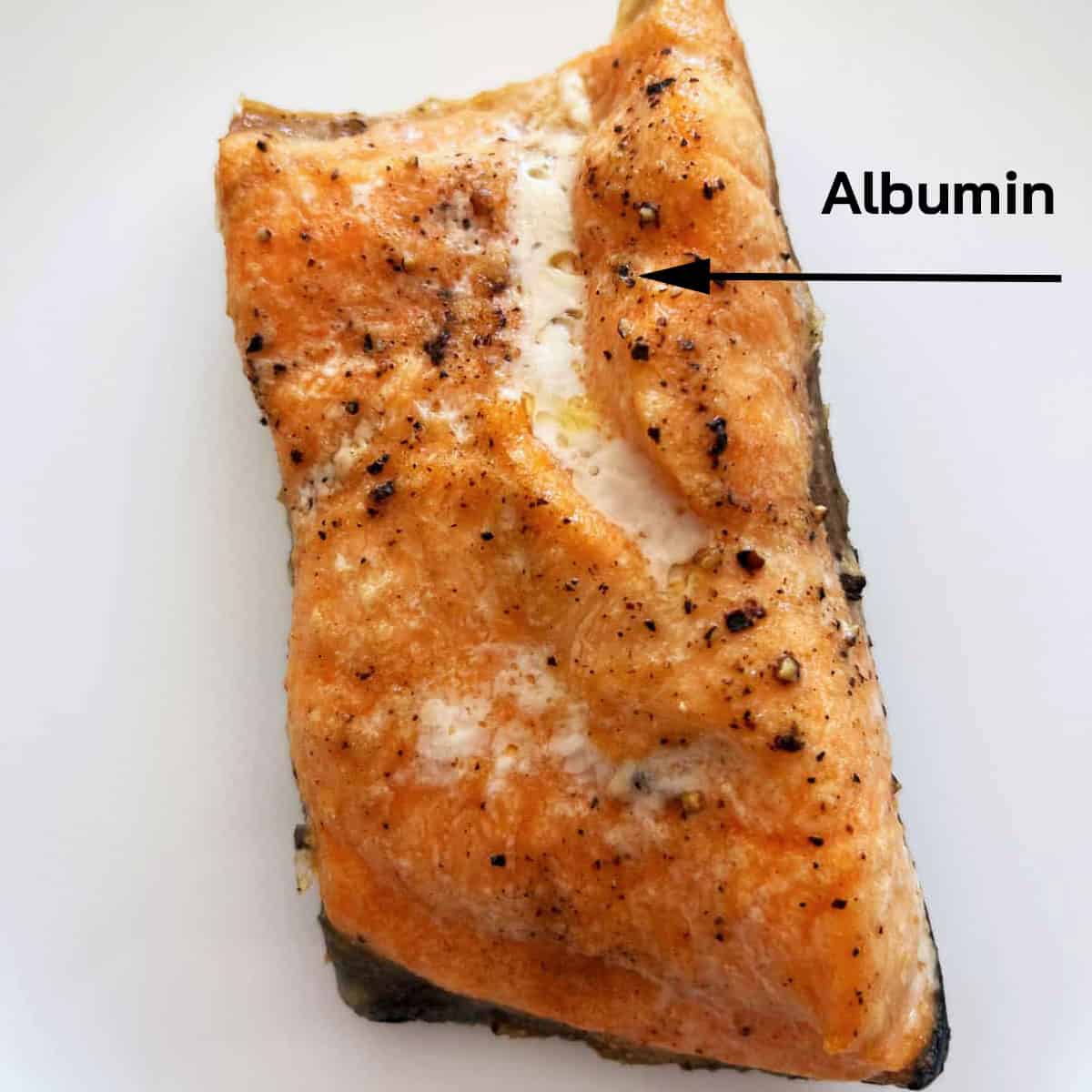
- Storage: You can keep the leftovers in an airtight container in the fridge for up to 3 days. Leftover salmon tends to dry out and taste fishy when reheated, so I prefer to crumble the leftovers and use them as a cold salad topping the next day for lunch (removing the skin). Delicious!
Serving Suggestions
While steamed rice is an obvious choice, I like to serve teriyaki salmon on top of any of the following:
On the side, I add an Asian-style vegetable such as:
Recipe Card
Baked Teriyaki Salmon
Video
Ingredients
Teriyaki glaze:
- 2 tablespoons reduced-sodium soy sauce - or a gluten-free alternative
- 1 teaspoon cornstarch
- 2 tablespoons dry white wine - or sake
- 1 tablespoon honey
- 1 teaspoon fresh garlic - minced
- 1 teaspoon fresh ginger root - grated
Salmon:
- 4 salmon fillets - 6 ounces each, pin bones removed
- Avocado oil spray
- 1 teaspoon sesame seeds - for garnish
Instructions
Bake the salmon:
- Preheat the oven to 425°F and position a rack in the middle of the oven.
- Line a rimmed baking sheet with foil and spray it with oil. Place the salmon pieces on the foil and lightly spray them with oil. Bake until cooked to 145°F, 12-15 minutes.
Make the sauce:
- While the salmon is in the oven, whisk together the soy sauce and cornstarch in a small saucepan. Add the white wine, honey, minced garlic, and grated ginger, whisking to combine.
- Heat the glaze over medium-low heat, whisking often, for 3-4 minutes, until it thickens into a syrup. Remove from heat as soon as it thickens. Keep a close eye on it - it thickens fast.
Finish the dish:
- Remove the cooked salmon fillets to a serving platter. Brush them with the teriyaki glaze, sprinkle with sesame seeds, and serve.
Notes
- You can broil the salmon instead of baking. Preheat your broiler on high and position a rack 3-4 inches below the heating element (top rack). Line a large, rimmed, broiler-safe baking sheet with foil and spray it with avocado oil. Place the salmon pieces on the foil and lightly spray them with oil. Broil for 5-6 minutes, until opaque and cooked to an internal temperature of 145°F.
- You can keep the leftovers in an airtight container in the fridge for up to 3 days. Leftover salmon tends to dry out and taste fishy when reheated, so I prefer to crumble the leftovers and use them as a cold salad topping the next day for lunch (removing the skin). Delicious!
Nutrition per Serving
Save this Recipe!
We will also add you to our weekly newsletter. Unsubscribe anytime. See healthyrecipesblogs.com/privacy/ to learn how we use your email.
Disclaimers
Most recipes are low-carb and gluten-free, but some are not. Recommended and linked products are not guaranteed to be gluten-free. Nutrition info is approximate. Please verify it independently. The carb count excludes non-nutritive sweeteners. Please read these Terms of Use before using any of my recipes.

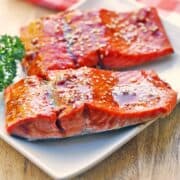
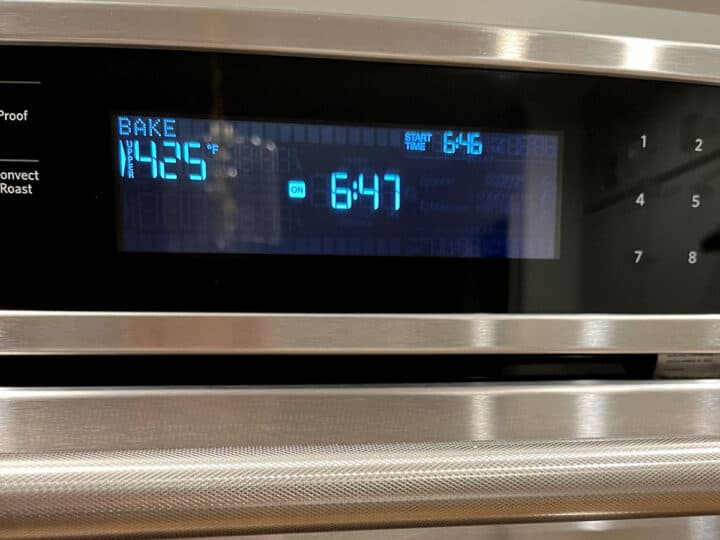
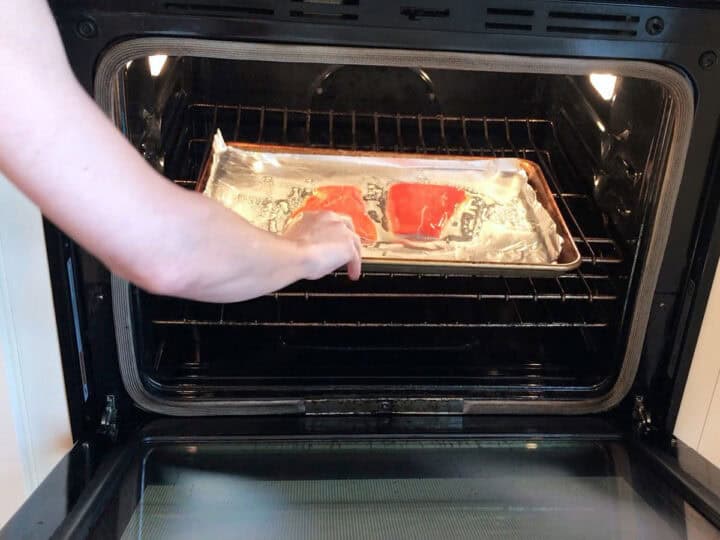
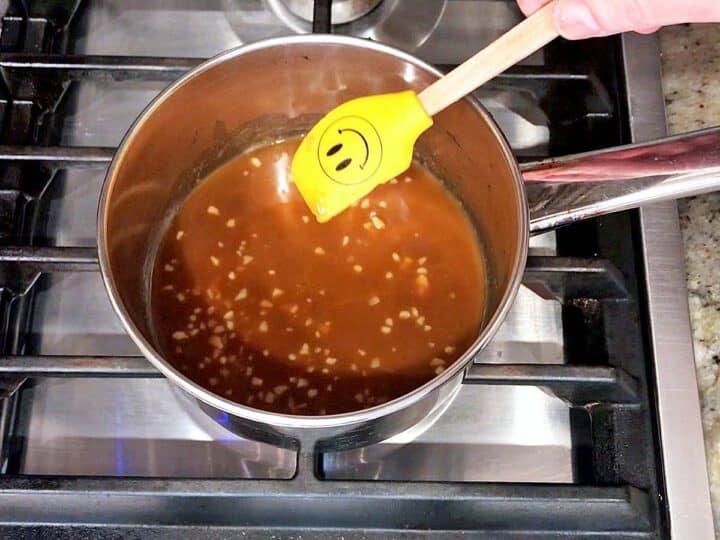
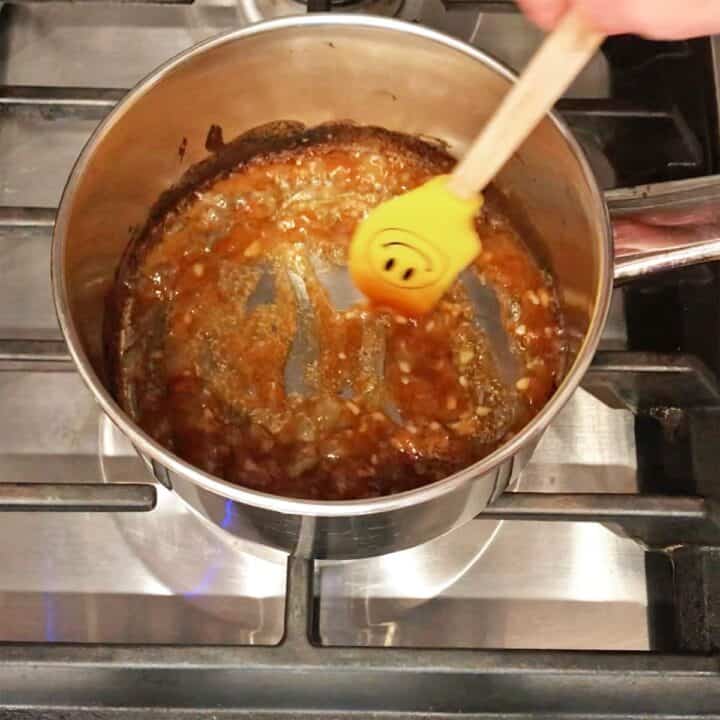
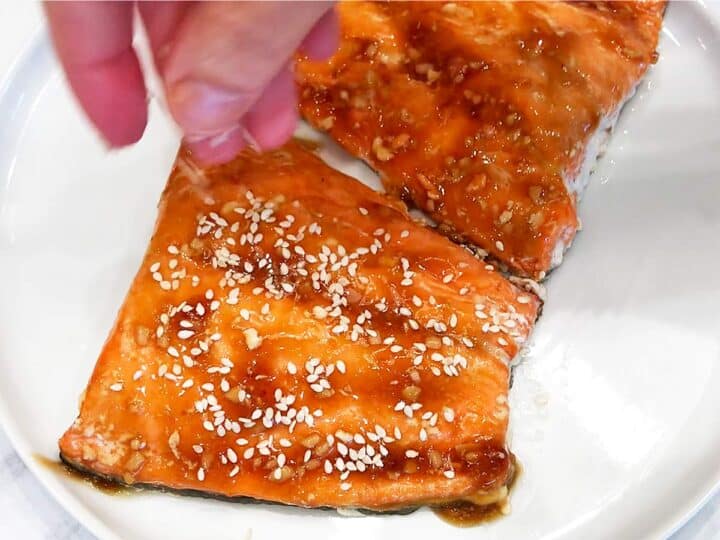
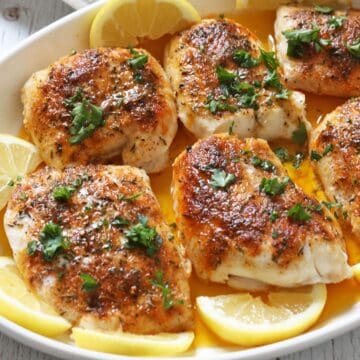
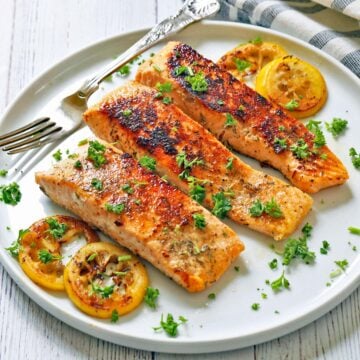
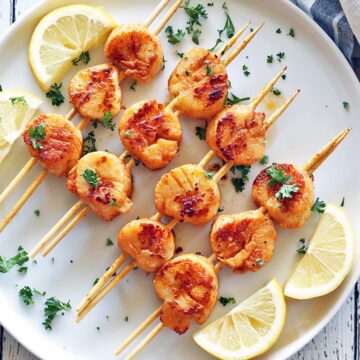

Paul Austin says
Okay, I’ll confess that I cheated a bit and used bottled Teriyaki sauce (San-J) because it is Gluten Free, and I needed to shave time - I used a shallow baking tray lined with foil and drizzled the fillets with avocado oil. My family follows certain metabolic typing diets and my wife cannot eat rice, so I cooked a pan of riced cauliflower seasoned with salt and pepper and minced garlic (which I also added to the sauce) and I did basmati for my son, Kees. I was so glad I followed your instructions to glaze after cooking- I used to habitually overcook the salmon and drown it in marinade- your combination of method and time and temperature was perfect and flavors were incredible! Another winner! I’ve shared your site with family and friends - I really appreciate the way that the menu mode keeps the page active!
Tot de volgende keer!
Vered DeLeeuw says
Hey Paul,
Thank you so much for trying my recipes and reviewing them. I appreciate it.
Thank you for sharing your experience with this recipe. Very interesting.
Tot snel. 🙂
Shilloo says
I don’t have cornstarch. Could I use plain flour in the same or smaller quantity? I want to try this fish today and can’t get to the shops!
Vered DeLeeuw says
Hi Shilloo,
Generally speaking, you would need to use double the amount of flour and cook it in the same amount of fat to make a roux, then add that to the sauce as a thickener. But I haven't tried it in this recipe. You can also try simply adding 2 teaspoons of flour directly to the sauce instead of the cornstarch and see what happens. However, flour usually needs to be cooked for longer than this sauce is cooked.
As I said, I only tested this recipe with cornstarch, and I always recommend making my recipes as written. If you have salmon that you need to cook today, I have other salmon recipes on this website. You can use the search function to look for them.